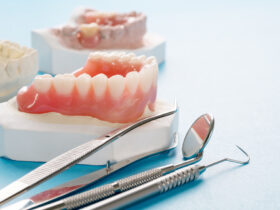Have you ever been stranded on the road because of car trouble? Was it due to a faulty replacement part installed during your last service? It’s never pleasant dealing with car breakdowns, especially those that could have been avoided through the use of quality components. This blog post is aimed at equipping you with all the information you need to select the best quality replacement parts for your vehicle, ensuring maximum performance and longevity.
Car maintenance can be a daunting task, particularly when you’re faced with the challenge of choosing the right replacement parts. When your trusted vehicle needs a fix, should you opt for OEM (Original Equipment Manufacturer) parts, aftermarket components, or used parts? Which will be the most reliable? Which will offer the best value-for-money? Read on as we unravel the answers to these critical questions.
Armed with the correct information, you will not only save money but also ensure that your car runs smoothly for longer. Keeping your vehicle in optimal condition through appropriate part replacements is not just essential for your peace of mind but also for your safety and that of other road users.
Understanding the Different Types of Replacement Parts
Distinguishing between OEM, aftermarket, and used car parts can be confusing, especially for those new to automobile maintenance. OEM parts are made by the car’s original manufacturer and are usually recommended by dealers due to their guaranteed fit and superior performance.
Aftermarket parts, on the other hand, are produced by various manufacturers not involved in your vehicle’s original design. While these components may be cheaper than OEM parts, they may not offer the same quality.
Used parts, salvaged from other vehicles, offer an even cheaper, eco-friendly alternative but come with potential risks, including diminished performance or hidden damage.
Detailing OEM Parts: Pros and Cons
OEM parts come with the assurance of quality, reliability, and fit. They are identical to the parts your car was equipped with when it left the manufacture. However, these parts tend to be more expensive and may require ordering from the dealer.
Making Sense of Aftermarket Parts: Pros and Cons
Numerous manufacturers produce aftermarket parts, giving consumers a wider choice and competitive prices. However, the quality varies significantly between manufacturers, leading to potential fit problems or decreased performance.
Unpacking Used Parts: Pros and Cons
Used parts can be a cost-effective and sustainable choice if sourced from reputable sellers. However, their lifespan is typically shorter, and they may harbor hidden damage or issues which could lead to further complications or repairs down the road.
Decoding the Myths about Replacement Parts
In this section, we debunk some prevalent myths about replacement parts, such as ‘Aftermarket parts are always of lower quality’ and ‘Used parts will always fail sooner.’
The Role of Your Mechanic in Choosing Replacement Parts
A good mechanic can help guide you in finding quality replacement parts that are suitable, reliable, and cost-effective. Their input plays a critical role in your car’s maintenance and performance.
Conclusion:
Making informed decisions about the best replacement parts for your vehicle is crucial to ensure its performance, longevity, and your safety. While OEM parts offer guaranteed quality and fit, they may be more costly than their aftermarket or used equivalents. It’s vital to weigh up the pros and cons of each, taking into account factors such as your budget, the part’s purpose and your specific vehicle’s compatibility.
Balancing these considerations can help you find the perfect blend of quality, affordability, and longevity in your car parts. Having a trusted mechanic to guide you can make the process both simpler and more reliable. Armed with this guide, you are now ready to make educated decisions, ensuring smooth rides and less stressful trips to the garage. Happy (and safe) driving!











Find Us on Socials